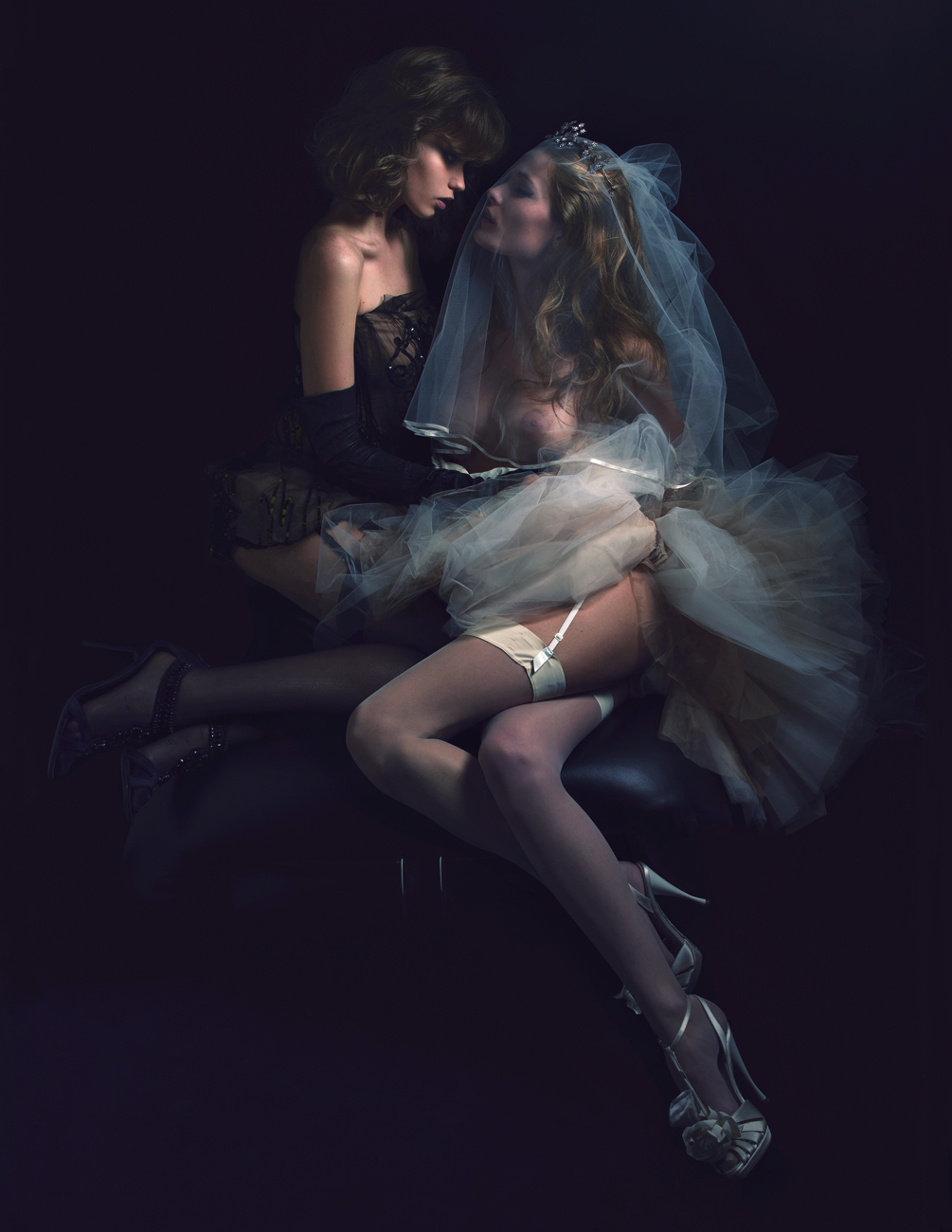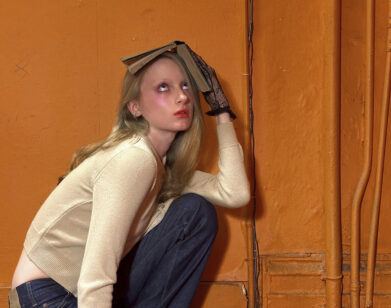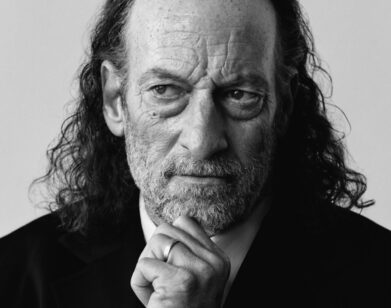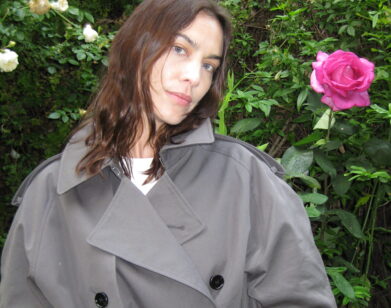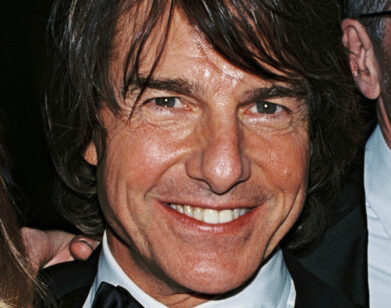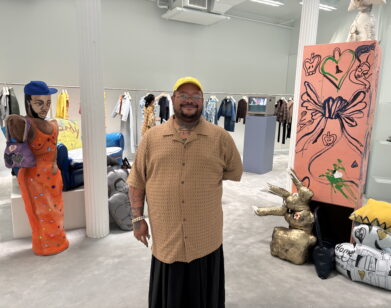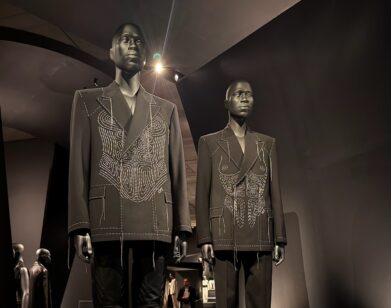Vera Wang
Since she opened her first boutique in New York’s Carlyle hotel in 1990, Vera Wang has made a name for herself designing bridal wear so singular and yet so ubiquitous that the mere mention of a bride wearing Vera Wang operates like an aesthetic seal of approval on wedded bliss—much the way the honeymoon destination or the size of the ring once did. The 61-year-old Wang has long been the celebrity fashion confectioner for larger-than-life walks down the aisle. This past year she was even responsible for first daughter Chelsea Clinton’s wedding dress, a bold, strapless silk gown, both arresting in its simplicity and meticulous in its draping (one of Wang’s signatures is her extraordinary ability to drape without ever losing the clean, sharp line of the silhouette—which makes her as much a master of romance as an expert at brass-tacks tailoring).
Bridal wear is a genre that, with the exception of Wang, garners little seasonal attention in the fashion industry and has even less influence in avant-garde circles—usually considered a rather conservative, almost antiradical gesture of crinoline, silk, and lace. Without question, Wang has redefined the limits of what a wedding dress can look like—who else could make a smoke colored gown look optimistic, as Wang did in her spring 2010 collection? But it is clear that Wang has other aspirations. It’s not that she wants to divorce herself from this side of her business (which comprises a big part of a company estimated to be worth $700 million). Perhaps it’s more about having an open relationship. In the last decade, she has taken definite steps to expand her creative influence on a woman’s closet that goes far beyond a dress worn once and preserved eternally in plastic. In 2000, she launched a high-end ready-to-wear line that seems markedly unlike anything fit for matrimony and much more urban, aggressive, and street. In 2007, she followed that up with a diffusion line called Simply Vera, which sells at Kohl’s. In 2002 she made a foray into homewears with china and crystal, and now a bedding collection this year. And while it’s no surprise that the former teen ice-skater previously made costumes for Michelle Kwan and Nancy Kerrigan, Wang even demonstrated her ability to tackle menswear with ice-skater Evan Lysacek’s black suit featuring a Swarovski studded snake running down the collar at his gold-medal performance during the 2010 Winter Olympics in Vancouver. The two met up recently in New York.
EVAN LYSACEK: You’ve had quite a year. How have you kept your head on straight with all of the different directions and projects you’ve been working on?
VERA WANG: It’s really an easy question to answer. I started this year dressing you at the Olympics. That was a huge challenge because I’d never dressed men before. And from then on there was really an incredible momentum. I had a very lucky year with you and the Clinton wedding and Alicia Keys’s wedding and a lot of my celebrity clients.
LYSACEK: Don’t forget Hilary Duff’s! I imagine it’s quite a challenge to take on a celebrity wedding when you’re simultaneously designing your own collection.
WANG: It’s hard to balance everything. It’s always challenging. You wonder whether you’re up to the job. One minute I’m thinking of the technological aspects of your skating costumes—plural—and I wouldn’t have wanted you to not have skated well because of some problem with the costume, which can happen. And then when you take on the wedding of the daughter of a former president, it’s sort of a larger-than-life concept. You have to capture who she is but you also have to understand what her significance is in American culture and history. Those are all very different challenges. And then movie stars like Hilary Duff or musicians like Alicia Keys are very specific girls with very specific lifestyles and ideas. So it isn’t just creative. There is a psychological part as well. In your case, it was sheer fear—to dress someone who competes in the Olympics is a whole other element.
LYSACEK: It’s remarkable how well you understood me when you were working on my costumes. And how you related to Chelsea and how you can relate to everyone else. In turn, I think the buying public really relates to you, and not many designers have been able to consistently bridge that gap between the fashion designer and the public. You have a high fashion line but you also have a very successful line at Kohl’s. How did you find that balance across the spectrum of the fashion industry?
WANG: I started at the very highest level so the upper end is something I know very well. I know it instinctively. But all the years I was designing, it frustrated me that I could reach so few women. Design is about point of view, and there should be some sort of woman or lifestyle or attitude in one’s head as a designer. So my being able to reach the masses was something that meant a great deal to me—especially for women who could never wear Vera Wang. I used to get tons of letters that said, “I’ll never get to wear you,” or “I’ll never get married in one of your dresses,” or “I’ll never have an evening gown like the one I saw on the red carpet.” I thought that was sad, because you give your life to this and you end up reaching very few people. So that was a major goal for me—to be able to reach and encourage more women, to encourage them to express themselves and be what they want to be. People get very trapped where they are. When they hear “fashion” they get intimidated, particularly at the upper end because it’s so elitist. If you can bring your own concept or your viewpoint and translate it not down but out, then you’re really successful in the truest sense.
LYSACEK: You’ve translated your viewpoint not just in clothing but in so many different brands and different sectors of the market.
WANG: Yup, I’m in mattresses now! [laughs]
LYSACEK: And dishes and sheets and accessories.
WANG: And china and luggage.
LYSACEK: You have a perfect background for global expansion. You worked for Ralph Lauren as a design director and at Vogue as senior fashion editor, and you lived in Paris when you were young. How do you see your empire expanding worldwide?
When brides ask me, “What’s the best advice you can give me on my wedding day?” I always have the same answer: “Be yourself.” Someone’s marrying you, they love you for who you are, and they don’t want you to be someone else.Vera Wang
WANG: I think there’s going to be a real push in the next two years in Asia—China and Korea specifically. And that’s a huge undertaking. Ten years ago it was impossible to break into that part of the world. Some of the biggest companies in the world found it challenging. But I am Chinese-American and I think what we do will resonate in China. So that’s where we see our biggest opportunities going forward. I do speak Mandarin and I also relate to the hunger that China has for culture and architecture and style. I think China is perhaps where Japan was 30 years ago. And, besides, most of the products in the world are already manufactured in China. So this presents me with a unique opportunity. I like to think that the brand has the sophistication of Paris, because I grew up there and went to school there and had a home there for 30 years. And then I’m very American at the core. I love the focus and bravery of European designers, but I love the nonchalance and throwaway aspect of America that has made Ralph [Lauren] and Calvin [Klein] two of the greatest icons. I try to bridge those two worlds in my work. The clothes may be couture on the runway but there’s an attitude that’s very street and that comes from America.
LYSACEK: I wonder if people know that you’re a huge sports fan. You love to watch them and you love to play them—golf, tennis, skating.
WANG: And I used to be a runner.
LYSACEK: Do you find a lot of similarities in fashion and sport?
WANG: When it came to dressing you for the Olympics I felt a total connection. Figure skating has been a great influence for me. I took dance at the School of American Ballet, which helped my own skating. And whether you are a skater or a dancer, without sounding narcissistic, it is all about looking in the mirror. Where I used to practice in New York City, there was a mirror so you could actually watch yourself skate. And nowadays my golf teacher will film me swinging so I can see what I am doing. Having looked first at myself and my own body for so long as one does as a dancer and a skater, it was so natural to do fashion. Every woman hates her own body. I don’t know a woman who doesn’t . . . well, I do know a few who love themselves but in the case of most women it’s like, “ugh.” And when I dress a woman, my design intention is to give them an attitude or a grace, no matter whether it’s a wedding gown or ready-to-wear. And I think that came out of skating and dance—the love of line and shape and a love for music. One thing about skating that I don’t think people focus on enough is the music factor. The music is a huge component of figure skating. It can dictate not only the choreography but the emotion. If it’s not the right music it can ruin a performance. You said yourself before the Olympics, “I had a whole program choreographed and then I realized, ‘This isn’t working.’ ”
LYSACEK: I did.
WANG: That was a little troubling because we thought you were going with a Spanish theme. We had all of our storyboards done in a Spanish style. This was in August and then you tell me, “By the way, V, I’m sending you a whole new tape of music and it’s totally different.”
LYSACEK: “Spanish is done.”
WANG: “Spanish is over.” And we said, “Oh, okay,” it’s not like we didn’t
have anything to do, because we actually do have a whole business to run. But you sent that music to me because you knew it would inspire me. I had a similar relationship with Michelle Kwan. She’d ask me to listen to the music she was skating to. But, Evan, you were also very open to our collaboration. And I went to see you skate, which helped me a lot. A little switch can go off in the brain to help me intuit what you’re trying to create.
LYSACEK: When you want to make something that’s modern and exciting, how do you also make sure that it is comprehendible to a larger audience?
WANG: It’s been challenging for me with my ready-to-wear line. Several reviewers have spoken about the length I go to dive off the deep end. Sometimes they say I’m afraid to just put out something plain. Certainly a big challenge for me with evening-wear is to make it look modern and artistic and avant-garde. The very concept of a ball gown is not in itself a modern concept, and women need to wear that for a certain presence in Hollywood. I’m also aware that a starlet might go to more than one place that night so the piece could also offer, maybe not a revolution, but an evolution. In terms of bridal, I’ve tried everything. I’ve tried short, long, deconstructed, constructed, bustiers, working in fabrics, working in color. I’ve been working in color in bridal for probably 15 years. Who else would do an entire collection dipped in tea? I did that one year. My design team dipped every single dress in tea in a bathtub. I did that just because I wanted to work out of the vocabulary of white. Those have been quite challenging parts. It’s kind of hard when your moniker is “bridal” and “evening” for people to understand that I don’t run around in a bridal gown all day, nor do I run around in an evening gown. I run around in clothes that resonate for me. I wanted to do those clothes in my ready-to-wear collection—because I don’t know how you can be a woman designing for other women and not relate it back to yourself. I think the greatest women, the ones I most respect in design—Miuccia Prada, Jil Sander, and Rei Kawakubo of Comme des Garçons—are all women extremely confident about their vision. These are women who never stop evolving and developing and sticking to their vision, whether it’s architectural, decorative, constructed, or whether it’s just plain art. What I’ve done is I’ve tried to evolve my own feeling of art—and that changes. Fashion is very trend-driven, but I try to interpret it in my own way. So it’s been very hard to gain a commercial kind of aspect to my ready-to-wear. But I do translate that for Kohl’s and hopefully with Lavender [a shoe collection]. I know what the retailers and the editors would like—mainly because I was an editor myself at Vogue. But I think fashion is intensely personal. It should be. It should give a woman a creative outlet, it should give her a little bit of an escape, and it should give her a little bit of individuality that she can add to her life. I don’t mean redoing your entire closet. I mean that a great shoe or a great handbag or a great top or a great coat or jacket can change everything. It’s important to view fashion as personal and creative—even for brides. When brides ask me, “What’s the best advice you can give me on my wedding day?” I always have the same answer: “Be yourself.” Someone’s marrying you, they love you for who you are, and they don’t want you to be someone else, they want you to be who you are. If you never wear blue eye shadow, why would you put it on on your wedding day? If you wear your hair simply, why would you suddenly dye it a different color and get a big ’do? To me it’s about respect and self-understanding and honesty.
LYSACEK: You always talk about honesty.
WANG: Bridal is always about who you are as a person and as a woman and as a lover and as a mate. People always ask me how a woman can pick just one dress. And the funny thing is they always know.
Evan Lysacek won a gold medal in the 2010 Winter Olympics and was the 2009 World Champion. This winter and spring he will be performing with Stars on Ice.

